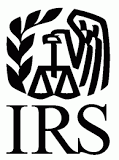The Consolidated Appropriations Act, 2023, a 4,155-page omnibus bill, was approved by Congress in its final form on December 23, 2022, and is expected to be signed by President Joe Biden before government funding runs out on December 30, 2022. The text of the SECURE 2.0 of 2022 is called “Division T” of the Appropriations Act and can be found on pages 2046 through 2404 of the bill. The Senate Finance Committee has issued a summary of the SECURE Act 2.0.
The SECURE Act 2.0 contains several important rules for employers operating retirement plans. Many of these rules mandate that employers make operational changes to their retirement plans, and complying with these regulatory changes will require careful administration by all employers. Following is a non-comprehensive overview of some of the Act’s most important provisions for employers.
Increased RMD Age
A beneficiary of qualified retirement plans and regular IRAs is currently required to start taking distributions from his or her account by April 1 following the year he or she attains age 72. Effective on January 1, 2023, the Act raises the age for required minimum distributions (RMDs) as follows:
- To age 73 for a person who reaches age 72 after December 31, 2022 and age 73 before January 1, 2033; and
- To age 75 for a person who reaches age 74 after December 31, 2032.
Higher Catch-Up Limits for Plan Participants Ages 60 to 63
Participants over age 50 who make elective deferrals to 401(k), 403(b), and SIMPLE plans are permitted to make “catch-up” contributions in addition to their regular contributions. The current maximum amounts for 2023 are $7,500 for 401(k) and 403(b) plans and $3,500 for SIMPLE plans. These amounts are adjusted for inflation.
Starting in 2025, plan participants can make an additional catch-up contribution after attaining 60 and prior to attaining age 64. For 403(b) and 401(k) plans, the amount is the greater of $10,000 or 50% more than the regular catch-up amount. For SIMPLE plans, the amount is the greater of $5,000 or 50% more than the regular catch-up amount.
“Rothification” Requirement for Catch-Up Contributions
Starting in 2024, catch-up contributions to 401(k) and 403(b) plans must be treated as Roth contributions. There is an exception for employees who made $145,000 (as adjusted for inflation) or less in the previous year.
Matching of Student Loan Repayments
Employers have long wondered how to help employees who have large student loan burdens. The SECURE Act 2.0 provides an answer: it permits an employer to make matching contributions under a 401(k) plan, 403(b) plan, or SIMPLE IRA with respect to “qualified student loan payments.” A qualified student loan payment is broadly defined as any indebtedness incurred by the employee solely to pay qualified higher education expenses of the employee.
Non-Monetary Incentives for Employees
The Act permits employers to offer de minimis financial incentives, not paid for with plan assets, such as low-dollar gift cards, to boost employee participation in workplace retirement plans. Such de minimis financial incentives would have previously been prohibited.
Expanded Automatic Enrollment
Effective for plan years beginning after 2024, newly adopted 401(k) and 403(b) plans will be required to automatically enroll participants upon becoming eligible to make elective deferrals. The initial automatic enrollment percentage must be at least 3% of compensation and must be increased annually until it is at least 10%. Employees will be able to opt out of making these elective deferrals.
Exceptions to Early Withdrawal Penalty
The SECURE Act 2.0 adds a variety of additional exceptions to the 10% penalty for pre-age 59 1/2 withdrawals from IRAs and retirement plans.
Effective in 2023, the following types of distributions are exempt from the penalty: (1) Distributions of up to $22,000 for individuals affected by a federally declared disaster that occurred on or after January 26, 2021; (2) Distributions to individuals with a terminal illness; and (3) Corrective distributions made to highly compensated employees from 401(k) and 403(b) plans as a result of the plan’s failure to pass certain nondiscrimination tests.
Effective in 2024, the following types of distributions are exempt from the penalty: (1) Distributions of up to $1,000 for unforeseeable or immediate emergency expenses; and (2) Distributions to victims of domestic abuse, up to the lesser of $10,000 or 50% of the account balance. Both of these distributions have the option to allow repayment to the plan within 3 years.
Effective 3 years after the date of the enactment of the SECURE Act 2.0, distributions of up to $2,500 per year for the payment of premiums for certain long term care insurance contracts.
Please contact us with any questions about how to implement the changes required by the SECURE Act 2.0.


